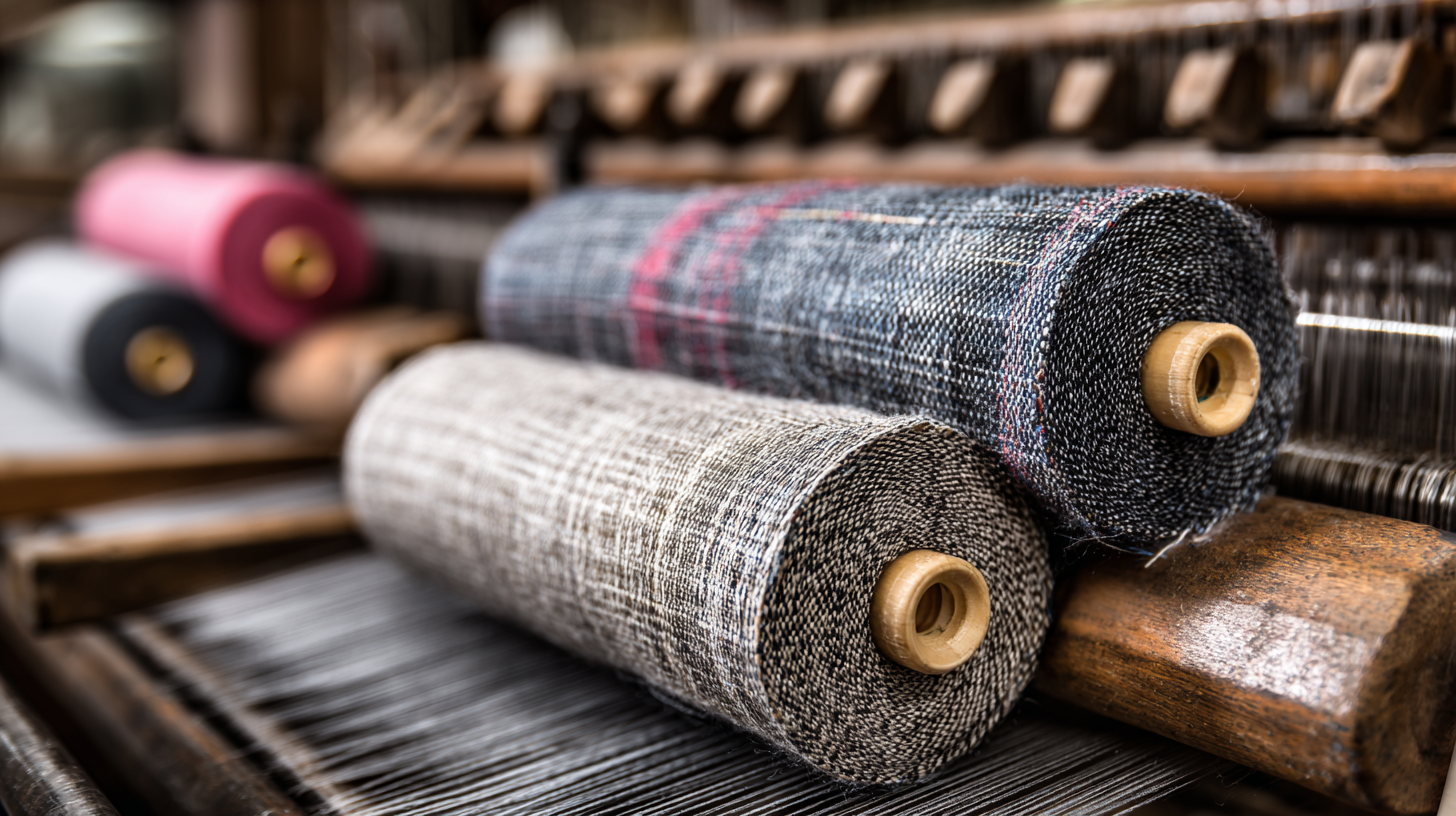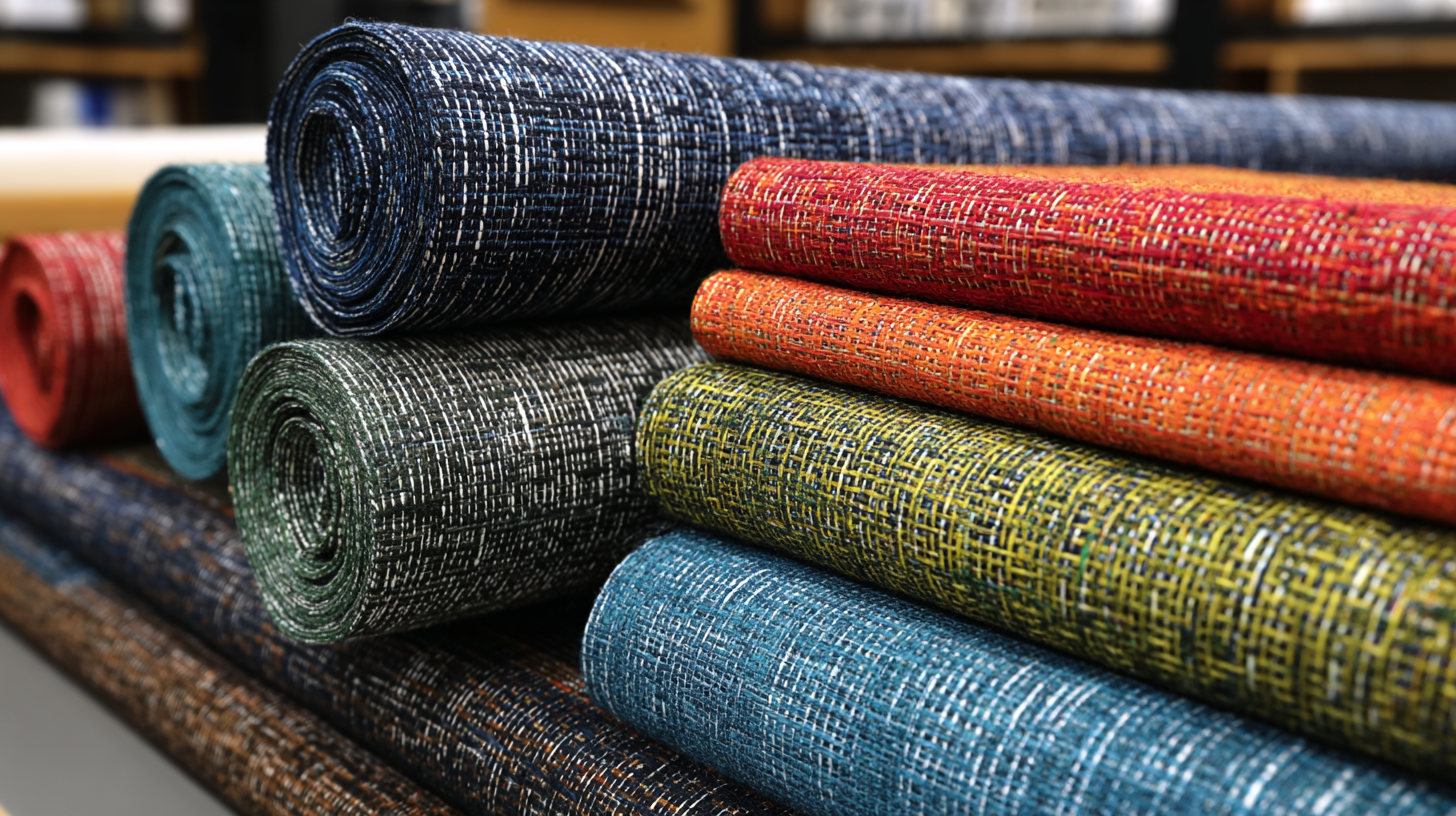2025 Top 5 Loom Fabric Trends: Innovative Designs and Sustainable Choices
As we look towards the future of textile design, the world of loom fabric stands at the forefront of innovation and sustainability. Renowned textile expert Dr. Emily Garret once stated, "The future of loom fabric lies in our ability to merge cutting-edge designs with eco-conscious practices." This ethos encapsulates the essence of the 2025 top trends in loom fabric, where creativity meets responsibility.
In an era where consumers are increasingly mindful of their environmental impact, the demand for sustainable choices in loom fabric production is soaring. From organic materials to eco-friendly dyeing processes, the industry is evolving to not only meet aesthetic needs but also to forge a path toward a more sustainable future. As designers and manufacturers alike embrace these trends, we can expect to see innovative patterns and textures that not only redefine our understanding of loom fabric but also contribute positively to our planet.
Join us as we explore the top five loom fabric trends that are set to dominate the market in 2025, showcasing a blend of creativity, functionality, and an unwavering commitment to sustainability. These trends not only reflect the shifting preferences of consumers but also highlight the pivotal role of loom fabric in modern textile development.

Emerging Sustainable Materials: Revolutionizing Loom Fabric Production for 2025
The textile industry is on the brink of transformation as it grapples with sustainability challenges and the need for innovative production methods. By 2025, the integration of emerging sustainable materials is expected to revolutionize loom fabric production. According to recent industry reports, India's textile sector is projected to play a crucial role in shaping global trends, emphasizing sustainability and digital innovation. The country’s market is set to grow, driven by a shift towards natural fibers and a revival of indigenous textile practices.
Innovations such as supercritical CO₂ dyeing technology represent significant steps towards minimizing the environmental footprint of fabric manufacturing. This technology not only reduces water usage but also enhances color effectiveness, paving the way for more eco-friendly production methods. Meanwhile, startups are leading the charge by repurposing waste materials, thus contributing to a circular economy in fashion. By leveraging advanced materials and technology, the textile industry's future looks promising, with a focus on eco-conscious choices that cater to an increasingly aware consumer base.

The Rise of Smart Textiles: Integrating Technology in Loom Fabric Designs
The textile industry is witnessing a transformative wave with the advent of smart textiles. These innovative fabrics are not just redefining style but integrating technology to enhance functionality and user experience. According to a report by MarketsandMarkets, the global smart textiles market is projected to reach $6.45 billion by 2026, growing at a CAGR of 25.4% from 2021. This surge is driven by advancements in wearable technology and the increasing demand for efficiency in everyday fabrics.
Smart textiles can monitor health, regulate temperature, and adapt to environmental conditions, making them a vital component in various sectors, from fashion to healthcare. For instance, fabrics embedded with sensors are already capable of tracking vital signs and providing real-time feedback, revolutionizing how we perceive clothing. This intersection of technology and design reflects a broader trend towards sustainability, as the use of smart textiles often leads to reduced waste and increased longevity of garments.
Tips: When selecting smart textiles, look for certifications that guarantee sustainability and safety, such as Oeko-Tex or GOTS. Additionally, consider investing in multifunctional pieces that not only showcase technology but also align with modern aesthetic sensibilities, ensuring both style and practicality in your wardrobe. Embracing these innovations can significantly enhance your personal and environmental footprint.
Consumer Preferences Shifting: Demand for Eco-friendly Fabrics in the Loom Industry
As consumer preferences shift towards eco-friendly fabrics, the loom industry is witnessing a significant transformation. The demand for sustainable choices is reshaping production methodologies and influencing design trends. Innovations such as digital fabrication technologies, including 3D printing and automated weaving, are enabling manufacturers to produce textiles that minimize environmental impact while delivering unique and innovative designs. This focus on sustainability not only addresses ecological concerns but also caters to an increasingly conscious consumer base.
The rise in secondhand fashion consumption reflects a complex relationship with fast fashion, where consumers adopt sustainable narratives while still engaging in traditional shopping behaviors. Meanwhile, the market for handloom products is expected to grow, projected to reach USD 17 billion by 2033. Such growth signals a robust interest in locally produced fabrics and traditional weaving techniques, which often embody the principles of sustainability. The overall trajectory of the loom fabric industry emphasizes a harmonious balance between innovative design and responsible production, paving the way for a future that prioritizes both style and environmental stewardship.
2025 Top 5 Loom Fabric Trends: Innovative Designs and Sustainable Choices
This chart illustrates the shifting consumer preferences towards eco-friendly fabrics in the loom industry for the year 2025. The trends highlighted include the percentage preference among consumers for different fabric types.
Innovative Weaving Techniques: Enhancing Durability and Texture in Loom Fabrics
The 2025 loom fabric trends are significantly influenced by innovative weaving techniques that enhance the durability and texture of textiles. As the demand for sustainable and high-performance fabrics grows, advancements in weaving technology offer unique opportunities for manufacturers to produce fabrics that not only look great but also withstand the test of time. Techniques such as 3D weaving and the integration of smart fibers allow for the creation of complex structures that provide both aesthetic appeal and functional benefits, transforming the way fabrics are designed and utilized.

The rise of electronic textiles, or e-textiles, illustrates how innovative weaving methods are reshaping the textile industry. These fabrics incorporate flexible electronics, enabling new functionalities such as sensory interaction and improved user experience. Additionally, sustainability remains a core focus, with manufacturers increasingly adopting recycled fibers and waterless dyeing processes. By marrying traditional craftsmanship with cutting-edge technology, the future of loom fabrics promises to deliver an exciting blend of innovation, quality, and environmental responsibility.
Market Forecast: Projected Growth of Loom Fabric Trends Driven by Sustainability
As we delve into the projected growth of loom fabric trends by 2025, sustainability emerges as a pivotal driver shaping the market landscape. The increasing awareness of environmental issues among consumers and brands has led to a significant shift towards eco-friendly materials and production methods. This transition is not merely a trend but a fundamental change in how the textiles industry operates. Brands that prioritize sustainable practices are expected to gain a competitive edge, attracting eco-conscious consumers eager to support responsible sourcing and manufacturing.
Market forecasts indicate that the demand for loom fabrics characterized by innovative, sustainable designs will rise sharply. Expect to see a surge in materials crafted from organic fibers, recycled components, and low-impact dyeing processes. These advancements not only cater to environmental concerns but also align with modern aesthetics, offering consumers stylish yet responsible choices. As manufacturers invest in sustainable technologies and practices, the loom fabric market is likely to experience robust growth, illustrating a harmonious blend of fashion and sustainability that resonates with consumers' evolving values.
2025 Top 5 Loom Fabric Trends: Innovative Designs and Sustainable Choices
| Trend | Description | Sustainability Factor | Projected Growth (%) |
|---|---|---|---|
| Recycled Fibers | Fabrics made from post-consumer waste such as plastic bottles. | High - Reduces landfill waste. | 25% |
| Organic Cotton | Cotton produced without harmful pesticides and fertilizers. | Medium - Promotes sustainable farming practices. | 20% |
| Biodegradable Fabrics | Innovative materials that decompose naturally after use. | High - Minimizes environmental impact. | 30% |
| Smart Textiles | Fabrics integrated with technology for enhanced functionality. | Low - Depends on manufacturing processes. | 15% |
| Upcycled Fabrics | Materials created from repurposed textile waste. | High - Reduces waste and resource consumption. | 22% |

